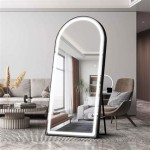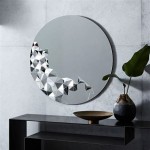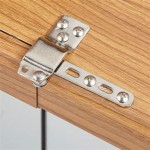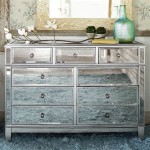Best Adhesive for Mirror Tiles: A Comprehensive Guide
Mirror tiles have gained immense popularity in recent years due to their ability to enhance the aesthetic appeal of any space, create the illusion of larger rooms, and reflect light, making them a versatile design element. Installing these mirror tiles requires a strong adhesive that can securely fix them to the surface. Choosing the right adhesive is crucial for ensuring a long-lasting, seamless installation and avoiding potential issues such as cracks, peeling, or falling tiles. This article will delve into the various types of adhesives available for mirror tiles, highlighting their pros and cons to help you make an informed decision.
Types of Adhesives for Mirror Tiles
Various adhesive options are available for mirror tiles, each with its unique characteristics and suitability for specific applications. Here are some of the most common types:
1. Construction Adhesive
Construction adhesive, also known as heavy-duty or multi-purpose adhesive, is a versatile option suitable for various materials, including mirror tiles. It typically comes in a tube and is applied with a caulking gun. Construction adhesive offers excellent adhesion, moisture resistance, and durability, making it suitable for both indoor and outdoor applications. It is particularly well-suited for larger mirror tiles or installations on uneven surfaces due to its ability to fill gaps.
2. Contact Cement
Contact cement is a powerful adhesive that provides a strong bond and dries quickly. It is often used for bonding non-porous materials like mirror tiles to smooth surfaces like drywall, plywood, or metal. Contact cement requires a thin layer to be applied to both the mirror tile and the surface before pressing them together. It is essential to note that contact cement can be difficult to remove once it has dried, making it crucial to position the tiles accurately before applying pressure.
3. Liquid Nails
Liquid Nails is a type of construction adhesive specifically designed for bonding various materials, including mirror tiles. It is available in different formulas, including formulations that are specifically designed for use with mirrors. Liquid Nails offers strong holding power and quick drying time, making it a popular choice for DIY projects. It is crucial to check the product label to ensure it is compatible with your specific application and surface.
4. Silicone Sealant
Silicone sealant is a flexible adhesive commonly used for sealing gaps and cracks around mirrors and other surfaces. It is available in various colors and can be used to create a clean and professional finish. While silicone sealant is not typically used as the primary adhesion method for mirror tiles, it can be used to secure the edges and prevent moisture from seeping in.
Factors to Consider When Choosing an Adhesive
Several factors should be considered when selecting the best adhesive for your mirror tile installation. These include:
1. Surface Type
The type of surface you are adhering the mirror tiles to plays a crucial role in determining the appropriate adhesive. Some adhesives work best on smooth surfaces, while others are more suitable for rough or uneven surfaces. For example, contact cement is ideal for smooth surfaces like drywall, while construction adhesive is better suited for rougher surfaces like concrete or brick.
2. Tile Size and Weight
The size and weight of the mirror tiles will influence the required adhesive strength. Larger and heavier tiles will necessitate a stronger adhesive with greater holding power, such as construction adhesive or contact cement. Smaller tiles might be suitable for lighter adhesives like Liquid Nails.
3. Environment
The environment where the mirror tiles are being installed can impact the adhesive's performance. If the installation is in a humid or wet environment, it is crucial to use a moisture-resistant adhesive like construction adhesive or silicone sealant. For outdoor installations, it is essential to choose an adhesive specifically designed for outdoor use to withstand temperature fluctuations and UV exposure.
4. Drying Time
The drying time of the adhesive affects the installation process. Adhesives that dry quickly allow for faster installation, while slower-drying adhesives provide more time for adjustments. Consider the drying time when planning your installation and choosing the best adhesive for your needs.
Best Adhesive for Mirror Tiles: Recommendations
Based on the factors discussed above, here are some recommendations for the best adhesives for various mirror tile installations:
1. For Smooth Surfaces (Drywall, Plywood, Metal):
Contact cement or Liquid Nails are excellent choices for smooth surfaces. Contact cement offers exceptional adhesion, while Liquid Nails provides a strong bond and convenience. Ensure the surface is clean and dry before applying the adhesive.
2. For Rough Surfaces (Concrete, Brick, Stone):
Construction adhesive is the preferred option for rough or uneven surfaces. Its strong holding power and ability to fill gaps ensure a secure and robust bond for heavy mirror tiles.
3. For Outdoor Installations:
Construction adhesive specifically designed for outdoor use is essential for outdoor installations. It will withstand temperature fluctuations, UV exposure, and moisture. Look for adhesives with excellent weather resistance and durability.
4. For Sealing and Finishing:
Silicone sealant can be used in conjunction with other adhesives to seal gaps and cracks around the mirror tiles. Choose a sealant that matches the color of the tiles for a seamless finish.
Remember, it is always advisable to consult the manufacturer's instructions for specific application guidelines and precautions. Testing the adhesive on a small, inconspicuous area before applying it to the entire installation is also recommended to ensure compatibility and desired results.
By carefully considering the surface type, tile size, environment, and drying time, and utilizing the recommended adhesives based on your specific needs, you can ensure a successful and long-lasting installation of your mirror tiles.
What Is The Best To Use Glue Mirrors A Wall Quora
What Adhesive Is Right For Your Project Learn Mosaic Art Craft The

How To Use Decorative Mirror Tiles In Interior Design

How To Hang Mirrors On Tile 3 Ways A Bonus The Palette Muse

Bbto 9 Pieces Mirror Adhesive Craft Mirrors Shatterproof Sheet Small Tile

Fancy 16pcs Self Adhesive Mirror Tiles Wall Stickers Flexible Non Glass Sheets For Home Living Room Decor 5 9 Silver Com

Buy From Best 20 Cm Waterproof Flexible Mirror Sheets Self Adhesive Plastic Tiles Non Glass Stickers For Home Decoration Oval Shape Sticker In

Mirror Tile Sticker Self Adhesive Waterproof Removable Large Full The Best S In Joom Geek

Factory Whole 3d Self Adhesive Geometric Hexagon Silver Glass Mirror Modern Tiles Livingroom Background Wall Decor China Home Decoration Made In Com

Flexible Mirror Sheets Self Adhesive Plastic Tiles Non Glass Stickers For Home At Rs 50 Piece In Surat








